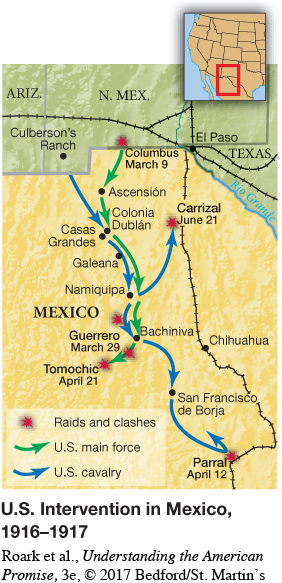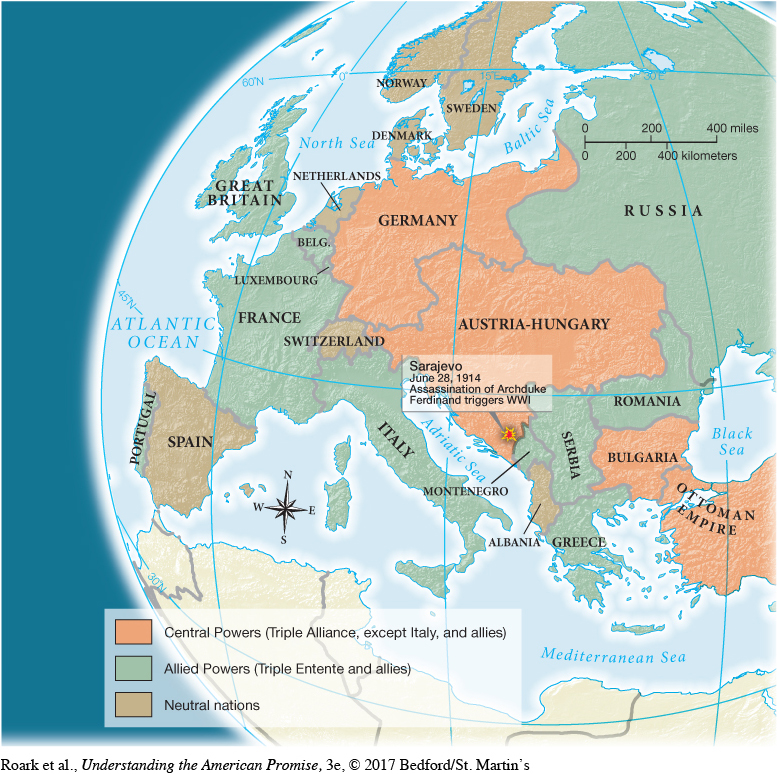The European Crisis

Before 1914, Europe had enjoyed decades of peace, but just beneath the surface lay the potentially destructive forces of nationalism and imperialism. The consolidation of the German and Italian states into unified nations and the similar ambition of Russia to create a Pan-Slavic union initiated new rivalries throughout Europe. As the conviction spread that colonial possessions were a mark of national greatness, competition expanded onto the world stage. Most ominously, Germany’s efforts under Kaiser Wilhelm II to challenge Great Britain’s world supremacy by creating industrial muscle at home, an empire abroad, and a mighty navy threatened the balance of power and thus the peace. [[LP Spot Map: SM22.01 U.S. Intervention in Mexico, 1916–1917/
European nations sought to avoid an explosion by developing a complex web of military and diplomatic alliances. By 1914, Germany, Austria-Hungary, and Italy (the Triple Alliance) stood opposed to Great Britain, France, and Russia (the Triple Entente, also known as “the Allies”). But in their effort to prevent war through a balance of power, Europeans had actually magnified the possibility of large-scale conflict (Map 22.2). Treaties, some of them secret, obligated members of the alliances to come to the aid of another member if attacked. [[LP Map: M22.02 European Alliances After the Outbreak of World War I/

The fatal sequence began on June 28, 1914, in the city of Sarajevo, when a Bosnian Serb terrorist assassinated Archduke Franz Ferdinand, heir to the Austro-Hungarian throne. On July 18, Austria-Hungary declared war on Serbia. The elaborate alliance system meant that the war could not remain local. Russia announced that it would back the Serbs. Compelled by treaty to support Austria-Hungary, Germany on August 3 attacked Russia and France. In response, on August 4, Great Britain, upholding its pact with France, declared war on Germany. Within weeks, Europe was engulfed in war. The conflict became a world war when Japan, seeing an opportunity to rid itself of European competition in China, joined the cause against Germany.
The evenly matched alliances would fight a disastrous war lasting more than four years, at a cost of 8.5 million soldiers’ lives. A war that started with a solitary murder proved impossible to stop. Britain’s foreign secretary, Edward Grey, lamented: “The lamps are going out all over Europe. We shall not see them lit again in our lifetime.”
Understanding the American Promise 3ePrinted Page 618
Section Chronology